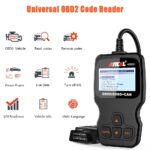For automotive enthusiasts seeking to enhance their vehicle’s performance, high flow catalytic converters are often considered a key upgrade. The promise of increased horsepower and improved exhaust flow is enticing. However, a crucial question arises: are these performance-oriented converters genuinely OBD2 compliant and, importantly, EPA approved? This concern is paramount for those wanting to maintain street legality and pass emissions testing while enjoying performance gains.
Understanding the nuances of catalytic converters is essential. They are a critical component in your vehicle’s emission control system, designed to reduce harmful pollutants. OBD2 (On-Board Diagnostics II) systems diligently monitor the efficiency of these converters. A decrease in efficiency, often caused by modifications or failing components, can trigger a Check Engine Light (CEL), signaling potential issues that could lead to failing emissions tests. Therefore, the claim of “OBD2 compliant” for a high flow catalytic converter suggests it can maintain emission control without triggering these warning lights, theoretically aligning with EPA standards.
The Environmental Protection Agency (EPA) sets the standards for vehicle emissions in the United States. Catalytic converters, as emission control devices, must meet these federal standards. When a product is labeled “EPA compliant,” it implies it has been designed and manufactured to meet these regulations. However, the term “OBD2 compliant” is more about the vehicle’s diagnostic system not detecting a fault, which should, in theory, correlate with EPA compliance. The challenge arises because aftermarket high flow catalytic converters are designed to be less restrictive than factory converters to improve exhaust flow. This reduced restriction could potentially lead to decreased filtration efficiency, risking OBD2 system triggers and failing emissions tests, despite claims of compliance.
Certain manufacturers, like GESI (G-Sport Emissions Systems), are known for producing high-performance catalytic converters that claim to be both high flow and EPA compliant. They assert that their Gen 1 and Gen 2 High Output (HO) and Ultra High Output (UHO) catalytic converters meet EPA standards. This is significant because it suggests these converters could replace factory units without causing OBD2 issues or failing emissions. Companies like COBB Tuning, MAPerformance, and AMS Performance utilize GESI converters in their performance downpipes, advertising EPA compliance for some of these products. For instance, AMS explicitly states their downpipes use GESI UHO converters that provide “emissions control with no notable loss in horsepower,” further implying EPA compliance and OBD2 compatibility.
However, it’s important to approach “OBD2 compliant” claims with informed caution. While a high flow catalytic converter might be designed and marketed as OBD2 compliant and even EPA compliant by the manufacturer, real-world results can vary. Factors such as the specific vehicle application, engine modifications, sensor placement in aftermarket downpipes, and even the sensitivity of a vehicle’s OBD2 system can influence whether a CEL is triggered. Furthermore, “EPA compliant” often refers to meeting certain emission standards in testing, but on-road performance and long-term durability can differ.
In conclusion, while the market offers “high flow catalytic converter OBD2 compliant” options, particularly from manufacturers like GESI and incorporated into performance downpipes by brands like COBB, MAP, and AMS, it’s crucial to understand the nuances of these claims. While these products aim to provide both performance gains and emissions compliance, factors beyond the converter itself can affect real-world OBD2 system behavior and emissions test outcomes. For those seeking performance upgrades without risking emissions compliance, choosing reputable brands that utilize high-quality, EPA-rated catalytic converters like GESI is a step in the right direction. Further research into specific applications and potentially seeking feedback from users with similar setups can provide additional assurance.
